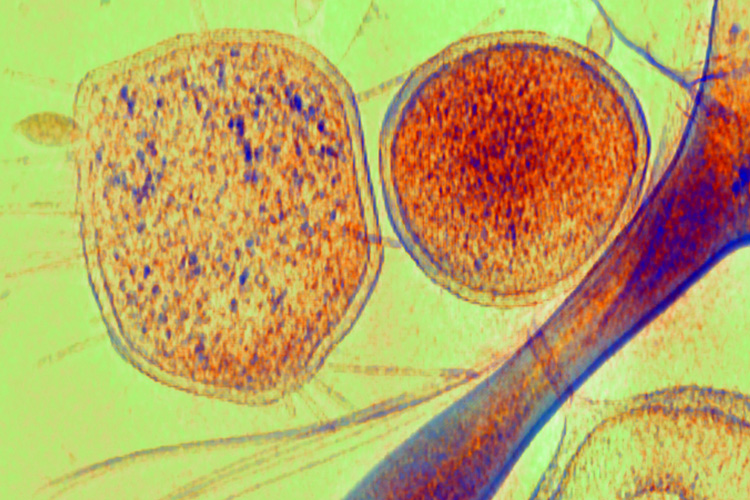If you could listen closely enough to Archaea, you might hear them busily shredding single-stranded DNA, most likely infectious material from a virus. And if you could look closely enough, you might see that the shredding tool used by the tiny organisms was a tiny Cas protein, not the big, bulky Cas9 protein so famous for its part in the CRISPR/Cas9 gene editing system, but another Cas9, a protein called Cas14.
Although researchers have been on the lookout for additional Cas proteins that could be added to the gene editing toolbox, Cas14 has been overlooked, likely because it was discarded along with other proteins thought to be too small to work with CRISPR systems. Cas14, however, did not escape the notice of a team scientists based at the University of California (UC), Berkeley.
The team, which was headed by CRISPR pioneer Jennifer A. Doudna, Ph.D., professor of biochemistry, biophysics and structural biology, UC Berkeley, found Cas14 after sifting through tens of thousands of genomes, which were compiled through the metagenomic sequencing of all the DNA in samples from a variety of exotic environments. The team found Cas14 in the genome of Archaea sequenced from groundwater samples obtained from a toxic cleanup site in Rifle, CO.
Scientists from the Innovative Genomics Institute explain CRISPR diagnostics and the roles of the various Cas proteins in detecting infections, cancer and other diseases. [IGI video]
According to the Berkeley researchers, Cas14 has potential as a biotech tool. Because of its small size, Cas14 could be useful in editing genes in small cells or in some viruses. But with its single-stranded DNA cutting activity, it is more likely to improve rapid CRISPR diagnostic systems now under development for infectious diseases, genetic mutations, and cancer.
“For molecular diagnostics, you want to be able to target double-stranded DNA, single-stranded DNA and RNA,” says Lucas Harrington, a UC Berkeley graduate student on Dr. Doudna’s team. “Cas12 is really good at double-stranded DNA recognition, Cas13 is really good at single-stranded RNA recognition, and now Cas14 completes the set: it is really good at single-stranded DNA recognition.”
Details about Cas14 appeared October 18 in the journal Science, in an article titled, “Programmed DNA destruction by miniature CRISPR-Cas14 enzymes.” This paper points out that while RNA-guided Cas enzymes are usually fairly large (950–1400 amino acids), Cas 14 is exceptionally compact (400–700 amino acids).
“Despite their small size, Cas14 proteins are capable of targeted single-stranded DNA (ssDNA) cleavage without restrictive sequence requirements,” wrote the article’s authors. “Moreover, target recognition by Cas14 triggers nonspecific cutting of ssDNA molecules, an activity that enables high-fidelity SNP genotyping (Cas14-DETECTR).”
Cas14 is similar to Cas12 and Cas13 in that, after binding to its target DNA sequence, it begins indiscriminately cutting all single-stranded DNA inside a cell. (Cas9, in contrast, binds and cuts only the targeted DNA.) That is, Cas14, like Cas12, has target-dependent, nonspecific DNase activity. Also, like Cas12, Cas 14 may serve as a DNA detection platform (DNA endonuclease-targeted CRISPR trans reporter; DETECTR) for diagnostic uses.
Although the wanton cutting of DNA is a possible disadvantage in therapy, it is a great advantage in diagnostics. The Cas14 protein can be paired with a fluorescent marker attached to a piece of single-stranded DNA. When Cas14 binds to its target DNA sequence—a cancer gene or a gene in infectious bacteria—and starts cutting DNA, it will also cut the DNA linked with the marker, generating a fluorescent signal.
“Cas14 targets single-stranded DNA in a much more specific way than Cas12 does,” notes one of the co-authors of the current study, Janice Chen, who recently received her Ph.D. from UC Berkeley. “That was a really unexpected finding. Because it is so small, we barely thought it could work, but actually, it is super-specific, which makes it also a really powerful addition to the diagnostic toolbox.”
Consistent with its origins in a more primitive microbe, the diminutive Cas14 appears to be a more primitive version of the larger and more complex Cas9 and Cas12 proteins, observed Harrington, hinting that the molecules have evolved over eons to be more specialized. The UC Berkeley researchers hope to learn from such primitive Cas proteins, which are the essential components of the Cas enzyme, so that they can design the most compact and sleek gene cutters they can.
Harrington noted that the metagenomic mining turned up various versions of Cas14 that may prove to be useful biotech tools. “One amazing thing … is just how diverse these systems are,” he said. “We’ve described more than 40 new CRISPR-Cas14 systems and eight different subtypes. This opens up the floodgates for investigation of these new CRISPR systems.”







